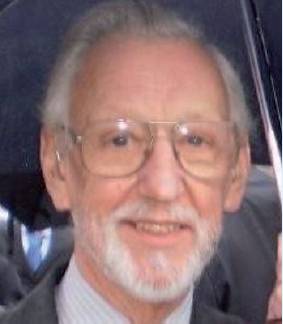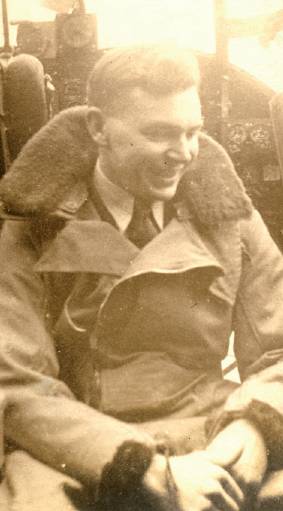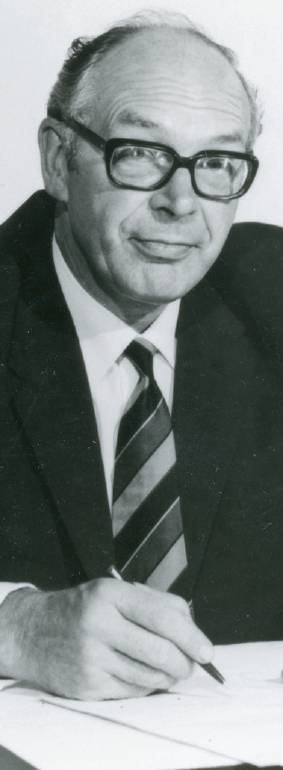Obituary
PROFESSOR BRIAN JOSEPH BRINKWORTH
CEng FREng FRAeS FEI FIMechE
1932-2021
Brian Brinkworth passed away peacefully on 17 June 2021 after a brief illness. A true gentleman with a quiet unassuming character, he was a brilliant academic, engineer, scientist, researcher, author, teacher, manager, communicator and solar energy pioneer, who began his career in aeronautics and returned to research its history in later life.
 Brian Brinkworth read Mechanical Engineering at Bristol University and started his aeronautical career in the 1950s at the Royal Aircraft Establishment (RAE), Farnborough, including some time serving in its Aircraft Vulnerability & Protection Section. He completed detailed research on important aeronautical and defence issues of the day, including the effects of radiation and external blasts on aircraft and the strength of aircraft materials. While at the RAE he was appointed Secretary to an Engineering sub-committee of the Aeronautical Research Council and continued to serve on ARC committees, the ARC Board and the Aerospace Technology Board after leaving the RAE in 1960.
Brian Brinkworth read Mechanical Engineering at Bristol University and started his aeronautical career in the 1950s at the Royal Aircraft Establishment (RAE), Farnborough, including some time serving in its Aircraft Vulnerability & Protection Section. He completed detailed research on important aeronautical and defence issues of the day, including the effects of radiation and external blasts on aircraft and the strength of aircraft materials. While at the RAE he was appointed Secretary to an Engineering sub-committee of the Aeronautical Research Council and continued to serve on ARC committees, the ARC Board and the Aerospace Technology Board after leaving the RAE in 1960.
Brian left Farnborough to become a Lecturer in Mechanical Engineering at the University College of South Wales and Monmouthshire. An interest in solar energy had begun while at RAE when he had been required to develop a solar furnace to investigate high fluxes of thermal radiation and pursuing this interest led him to becoming a pioneer of and leading international expert on solar energy and, in 1977, being appointed Professor of Energy Studies at University College, Cardiff.
He became the first President of the Energy Institute with a background in renewable energy (1989-90), his visionary book Solar Energy for Man was published in 1972, he gave the IMechE’s Isaac Newton lectures to children in 1976, was elected a Fellow of the Royal Academy of Engineering in 1992 and published his book on the hydromotor in 1998 for which he was awarded the James Watt Gold Medal by the Institution of Civil Engineers. He also wrote candid letters to newspapers commenting on topics of the day and will also be remembered for his outstanding university teaching and role as Dean of the Faculty of Engineering at Cardiff.
 Following his retirement in 1996, Brian was awarded the status of Emeritus Professor by Cardiff University and returned to aeronautical research, though this time looking at the development of aeronautics. He could often be found studying books, reports and files at the National Aerospace Library, the Farnborough Air Sciences Trust or the National Archives. In 2010 his paper ‘On the Aerodynamics of the Miles M.52 – A Historical Perspective’ was published by The Aeronautical Journal and cited by many as a key input into discussions on whether the British designed Miles M.52 research aircraft could have been the first aircraft to reach the speed of sound if it had not been controversially cancelled.
Following his retirement in 1996, Brian was awarded the status of Emeritus Professor by Cardiff University and returned to aeronautical research, though this time looking at the development of aeronautics. He could often be found studying books, reports and files at the National Aerospace Library, the Farnborough Air Sciences Trust or the National Archives. In 2010 his paper ‘On the Aerodynamics of the Miles M.52 – A Historical Perspective’ was published by The Aeronautical Journal and cited by many as a key input into discussions on whether the British designed Miles M.52 research aircraft could have been the first aircraft to reach the speed of sound if it had not been controversially cancelled.
Brian became a major contributor to the Society’s then new Journal of Aeronautical History and did much to establish its reputation. His papers on the first jet aircraft, the Gloster E28/39, together with his three-part review and analysis of early aircraft spin research were major contributions to the field and further papers on spin analysis included a paper on Spitfire tail plane protection and spin trials. He also explored how the planning of aircraft production and the government’s use of production statistics evolved during World War 2.
In 2014 he published a book, Secrets of a German PoW: the Revelations of Hauptmann Herbert Cleff, which explored how the British learnt about aeronautical developments in Nazi Germany through interrogating a captured German soldier. He also held a Private Pilot’s Licence.
Those who worked with Brian benefited from his visionary but selfless approach and his encouragement. He taught them not only about energy, aeronautics and research, but also about leadership and management by setting an example. To his family, Brian was a devoted husband, a loving father and a proud grandfather and great grandfather.
Bill Gillett, Anthony Derrick and Mick Hutchins
SIR JOHN CHARNLEY
CB MEng HonFRAeS FREng FRIN
1922-2021
Sir John Charnley, the man who led the development of blind landing from a purely military project into the civil arena, before holding senior positions in the Ministry of Defence, passed away in September aged 99.
 William John Charnley was born in Liverpool. The son of a joiner, he gained a First Class degree in Civil Engineering from Liverpool University in 1942. Much to his surprise, he was not called into the armed forces but sent to the Royal Aircraft Establishment at Farnborough, where he started as a Junior Scientific Officer in the Flight Test Division of the Aerodynamics Department. He was not the only one to be surprised; when the head of Aero Flight returned from a visit to the US, he discovered that his department’s newest recruit did not hold an aeronautics degree and was from a red brick university to boot.
William John Charnley was born in Liverpool. The son of a joiner, he gained a First Class degree in Civil Engineering from Liverpool University in 1942. Much to his surprise, he was not called into the armed forces but sent to the Royal Aircraft Establishment at Farnborough, where he started as a Junior Scientific Officer in the Flight Test Division of the Aerodynamics Department. He was not the only one to be surprised; when the head of Aero Flight returned from a visit to the US, he discovered that his department’s newest recruit did not hold an aeronautics degree and was from a red brick university to boot.
Charnley was swiftly moved to work in the wind tunnels, however, it did not take long for Aero Flight to regret letting go of a talented man, keen to learn and who could work happily with everyone. Over the following 12 years his work in Aero Flight was centred on high-speed flight, starting with work on the Gloster E.28/39 which tested Whittle’s jet engine.
After rejecting several offers from the private sector, Charnley was sent in 1955 to head the Blind Landing Experimental Unit (BLEU), firstly at Martlesham Heath and later at RAE Bedford. Under his leadership, the civil applications of the military project were exploited and the work on blind landing led to the development of the AUTOLAND system.
The extension of a military into a joint military and civil project was smoothed by his personal approach, whether building relations with Smiths Industries and BEA, playing chess with the chaps stationed in the aircraft hangers or running the risk of taking the Queen’s husband up in a test aircraft to demonstrate landing in thick fog – before the flight he asked his wife whether they might “still send people to the Tower for harming a Prince?” The flight went like clockwork and Prince Philip declared: “That was incredible! Can we go round again?”
 In 1963 Charnley returned to Farnborough as Head of Instruments & Electrical Engineering, before further promotion to take over the Weapons Department, one of the RAE’s biggest departments, in 1965.
In 1963 Charnley returned to Farnborough as Head of Instruments & Electrical Engineering, before further promotion to take over the Weapons Department, one of the RAE’s biggest departments, in 1965.
He then started the daily commute to Whitehall where, as Head of Research Planning, he was able to convince industry and universities to work more closely with the government’s research establishments. Further promotion led to his appointment as MoD Controller of Guided Weapons & Electronics (CGWL), where he was responsible for the procurement of all guided missiles and their testing on ranges in the UK and in Australia. His wife sometimes accompanied him to Woomera, proving very popular after her first visit coincided with the first rain for several years.
His final government appointment was as Controller of R&D Establishments & Research, with responsibility for the RAE and the government’s other 11 defence research establishments. Within this role he was Chief Scientist to all three Services and also the Professional Head of MoD Scientists and Engineers.
Charnley received many accolades. He was awarded the Society’s Gold medal in 1980, appointed an Honorary Fellow in 1992 and was President of the Bedford Branch, whose annual lecture is named after him. He also served as President of the Royal Institute for Navigation and was the winner of its Gold Medal. He was a Fellow of the Royal Academy of Engineering, made a Companion of the Bath in 1973 and was knighted in 1981.
Sir John was a devoted family man, with weekends dedicated to his wife, children and grandchildren. He courted his wife, Mary, from schooldays, even cycling every other weekend 100 miles from Liverpool over Shap to the farm outside Penrith where she was evacuated, much to the amazement and amusement of the other people on the farm.
Sir John’s retirement from government service led him to many influential appointments, including Chairman of CAA R&D, Specialist Advisor to the House of Lords and President of EUROCAE, though perhaps his favourite post was Chairman of the Shuttleworth Collection. In this capacity, joined by his wife and two others, he enjoyed taking part in the annual London to Brighton Run in period costume despite, on one occasion, having to help push the car up the last incline on the South Downs.
 Brian Brinkworth read Mechanical Engineering at Bristol University and started his aeronautical career in the 1950s at the Royal Aircraft Establishment (RAE), Farnborough, including some time serving in its Aircraft Vulnerability & Protection Section. He completed detailed research on important aeronautical and defence issues of the day, including the effects of radiation and external blasts on aircraft and the strength of aircraft materials. While at the RAE he was appointed Secretary to an Engineering sub-committee of the Aeronautical Research Council and continued to serve on ARC committees, the ARC Board and the Aerospace Technology Board after leaving the RAE in 1960.
Brian Brinkworth read Mechanical Engineering at Bristol University and started his aeronautical career in the 1950s at the Royal Aircraft Establishment (RAE), Farnborough, including some time serving in its Aircraft Vulnerability & Protection Section. He completed detailed research on important aeronautical and defence issues of the day, including the effects of radiation and external blasts on aircraft and the strength of aircraft materials. While at the RAE he was appointed Secretary to an Engineering sub-committee of the Aeronautical Research Council and continued to serve on ARC committees, the ARC Board and the Aerospace Technology Board after leaving the RAE in 1960. Following his retirement in 1996, Brian was awarded the status of Emeritus Professor by Cardiff University and returned to aeronautical research, though this time looking at the development of aeronautics. He could often be found studying books, reports and files at the National Aerospace Library, the Farnborough Air Sciences Trust or the National Archives. In 2010 his paper ‘On the Aerodynamics of the Miles M.52 – A Historical Perspective’ was published by The Aeronautical Journal and cited by many as a key input into discussions on whether the British designed Miles M.52 research aircraft could have been the first aircraft to reach the speed of sound if it had not been controversially cancelled.
Following his retirement in 1996, Brian was awarded the status of Emeritus Professor by Cardiff University and returned to aeronautical research, though this time looking at the development of aeronautics. He could often be found studying books, reports and files at the National Aerospace Library, the Farnborough Air Sciences Trust or the National Archives. In 2010 his paper ‘On the Aerodynamics of the Miles M.52 – A Historical Perspective’ was published by The Aeronautical Journal and cited by many as a key input into discussions on whether the British designed Miles M.52 research aircraft could have been the first aircraft to reach the speed of sound if it had not been controversially cancelled.
